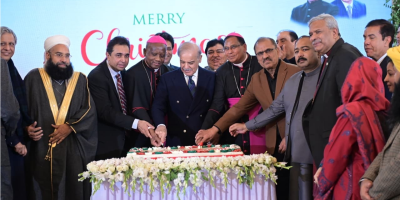Pakistan Railways have amounted to a prodigious 144 billion PKR loss

Islamabad, JUL 17 /DNA/ – The losses incurred by Pakistan Railways during the five years period (2015 – 2020) have amounted to a prodigious 144 billion PKR. The stiff competition from road transport and the inability of PR to adopt a customer-centric business plan because of complex bureaucratic structure, has led to an inefficient, underfinanced, and overstaffed public agency running in losses for the last three and a half decades. Placed in the “Retain and Restructure “category after the State Owned Enterprises (SOE) triage exercise in March 2021, the 19th-century infrastructure still grapples with the challenges of the 21st century after several repeated rounds of halfhearted reforms.
This was revealed in a recent research report by the Pakistan Institute of Development Economics.
PIDE report recommended radical institutional reforms in Pakistan Railway as it currently ranks among the top ten loss-making state-owned enterprises (SOE) in Pakistan; a 44 Billion PKR deficit was reported in 2020; 36 billion PKR pension liability on PR was reported for 120,000 employees in 2020; and to overcome the deficit and pension liability, a 45 billion PKR subsidy was provided by the government in 2020.
According to a Press Release issued from the Pakistan Institute of Development Economics, it was said in the report that Fifty percent of ticketing is now electronic but Pakistan Railway still lacks an Enterprise Resource Planning (ERP) system which integrates all the processes. Even the flow of financial information within the enterprise reports a delay of 60 days.
Customer Relationship Management (CRM) systems should be created for the customer relationship including tracking arrangements, call centers, SMS alerts, etc. Railways Automated Booking and Travel Assistance (RABTA) has been advertised. Automation is expected to address the leakages which have been the major reason behind the decline in the volume of PR freight in 2020-21.
Additionally, there are 115 000 unverified retirees of PR, who are paid 35 billion rupees annually. To verify these individuals, a biometric verification system for the pensioners has been proposed. The pension deficit has been fielded by the government of Pakistan for PR. A pay and pension commission has been formed which will have to think about not only railways but other public enterprises as well.
Furthermore, the Pakistan Railway has 178000 acres of land, out of which 145 000 are being used for operational purposes. The remaining 33 000 acres is the “Right of Way” entitled to the Pakistan Railway. This land is both underpriced as well as underpaid as the rents are concerned. Two options can be exercised to put this ancillary land in use. Around 5 to 10 billion PKR can be generated annually by rewriting the concession agreements and getting rid of the encroaches. Or like Dehli Metro, transforming the railway stations of big cities like Lahore Karachi Islamabad into commercial hubs with decent shopping plazas, cafes, and restaurants.
PIDE’s report further stated that to enhance the productivity of human resources, there is a need to understand how individuals think and decide. This would require going beyond the “rationality” assumption and expanding the set of tools and strategies Pakistan Railway can think of via behavioral economics. Automatic, social, and thinking with mental models shape the decision of all individuals.
While the losses incurred by PR can be reframed so they are more obvious to all levels of employees. The losses can be interpreted in terms of the declined health and education facilities for the families of the employees. The cost of subsidies provided by the government can be highlighted in terms of the number of children outside school or poverty relief that government provides.
Following the Rider-Elephant-Path approach, one experiment could be to design a specific program for mid-level officers from different departments of PR on how business-oriented railways work. The participation of the mid-level management plays an essential role in implementing reforms. Thus, the baseline or design of the reforms should focus on inspiring and engaging this tier of bureaucracy. Their attitudes can play a pivotal role in the acceptance and implementation of reforms. The group should also include partners of PR from the private sector. The inclusion of the private sector will help the officers to grab the perspective of the private sector and understand the market dynamics, the results, and the recourse. As a part of learning by doing exercise, they should get an opportunity to interact with some of the best railway personnel in the world, the research report stated.
PIDE’ suggested program would create a reform-minded community within the system. This nudger’s community can then influence the organization both horizontally and vertically for catalyzing the implementation of reforms. Experiments have proved that peers in the workplace exert a strong influence on an individual’s performance by enforcing social norms. Proximity to more productive workers can lead to an increase in efficiency models that can be tested for Pakistan Railway.
Related News

Field Marshal Asim Munir Celebrates Christmas at Church
RAWALPINDI – DEC 25 /DNA/: In a powerful demonstration of national unity and interfaith harmony,Read More

PM Shehbaz reaffirms equal rights
Saifullah Ansar ISLAMABAD, Prime Minister Muhammad Shehbaz Sharif on Thursday reaffirmed the government’s firm commitmentRead More


Comments are Closed